- Home
- slideshows
- miscellaneous
- The best iPhone for every type of person and budget
The best iPhone for every type of person and budget
Buying advice for current iPhone owners

The best iPhone overall
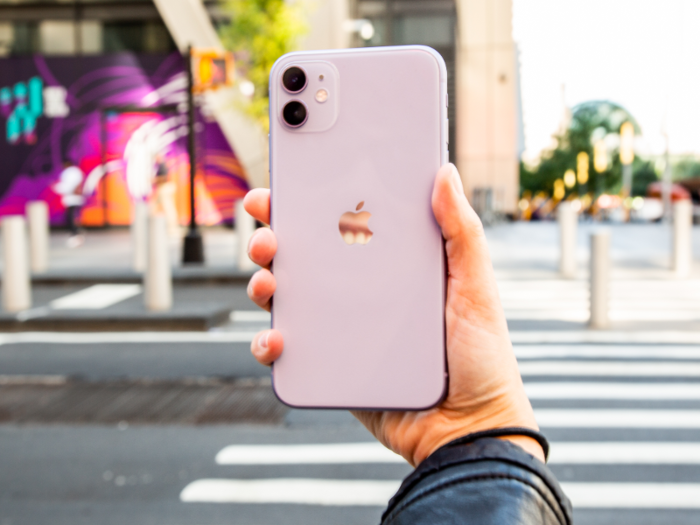
It's been years since a brand-new iPhone cost this little. The $699 price of the iPhone 11 makes it the best iPhone for just about every shopper. It has all the specs most people need for $300 less than the top-of-the-line iPhone 11 Pro and for $400 less than the iPhone 11 Pro Max.
Here are the only important differences: The iPhone 11's 6.1-inch screen is made with an LCD panel instead of an OLED and it has a larger bezel (the back border around the screen), the 6.1-inch screen is smaller than the Max's 6.8-inch screen but larger than the 11 Pro's 5.8-inch screen, and the iPhone 11 Pro has an extra telephoto camera lens for zooming in on objects.
Otherwise, everything is the same. The iPhone 11 has the same fast A13 Bionic processor, an ultra-wide and regular wide rear camera setup, wireless charging, and better battery life than previous iPhones. Unless you regularly zoom in on objects in pictures or you really want an OLED screen that's either larger or smaller than 6.1 inches, there is no reason to pay more for the iPhone 11 Pro or 11 Pro Max.
In our tests, the iPhone 11's two 12-megapixel camera setup was able to handle everything we asked of it and it took excellent photos — especially in low-light situations. The front-facing camera is also 12-megapixels and it can create the blurred background effect on your selfies so you're the focus — not the background. You can also use the front camera to securely unlock your phone with Face ID.
The entry-level 64GB of storage should be more than enough for most people, but if you want more, you can get 128 or 256GB of storage instead — for a few hundred dollars more.
The iPhone 11 comes in yellow, green, purple, black, white, and red. It's also water resistant for 30 minutes in depths of up to 2 meters.
Pros: Excellent price for an iPhone, fast new processor, great 6.1-inch screen, long battery life, dual-camera setup on the back, wireless charging
Cons: It's missing the OLED screen and the telephoto camera lens of the iPhone 11 Pro lineup
The best small high-end iPhone
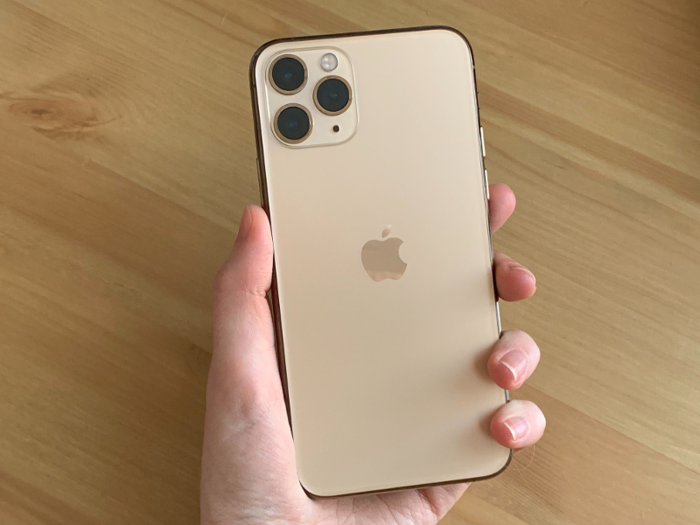
There are three kinds of people who should spend an extra $300 and get the iPhone 11 Pro:
- Those who want to upgrade every year to the best cutting-edge tech.
- Those who love to take photos with zoom, but also want to option to take ultra-wide shots.
- Those who do not upgrade until their phones completely stop functioning after five years of use.
It is also the best iPhone for people who prefer small phones they can operate with one hand. The iPhone 11 Pro's 5.8-inch OLED screen makes for a phone that is just the right size for most people's hands. It's the phone I chose because I am one of those people who upgrade every year and I like that I can use it one-handed.
If you have big hands and you want a big screen, the iPhone 11 Pro Max's 8.8-inch OLED screen will satisfy you more than the 6.1-inch iPhone 11.
This year, the back of the phone is made with matte glass, and I love it. I've always disliked shiny, glossy glass-backed phones because they never stay clean — the second you touch them, they are ruined by fingerprints forever no matter what you do. The texture is lovely and it does not attract fingerprints. I do highly recommend using a case, though, as glass is fragile and needs protection — especially when it's covering a $1,000 phone.
Inside, the new A13 Bionic processor is super fast. I noticed the difference the most in the new camera app. Because the iPhone 11 Pro has three cameras on the back, the camera app has controls that allow you to switch from the regular wide-angle view to the ultra-wide-angle view or the 2x optical zoomed view with the tap of an icon. The transition between camera lenses is perfectly smooth and instantaneous. That, is some serious processing power.
Speaking of those 12-megapixel cameras, they take phenomenal photos. The color reproduction is natural, the images look excellent, and you can take ultra-wide or 2x zoomed-in shots while maintaining the high image quality. I use the 2x optical zoom all the time, so for me, this was a must-have feature and motivation enough for me to buy the iPhone 11 Pro.
The new Night Mode feature is truly impressive. Much like Google's Pixel phones, the iPhone 11 Pro can take beautiful photos in low-light conditions and even absolute darkness. It does this by extending the exposure, so you do have to hold still for several seconds while using Night Mode, but it really works. With the iPhone XS, I couldn't get good pictures of food in dimly-lit restaurants or of people at dimly-lit parties — with the iPhone 11 Pro, I can.
The front-facing camera is also 12-megapixels and it can create the blurred background effect on your selfies so you're the focus — not the background. You can also use the front camera to securely unlock your phone with Face ID.
The battery life is also leagues better on the 11 Pro. After a day of work, my iPhone XS used to be at 50% battery, but the 11 Pro is usually only at 75% or 80% when I get home. It charges wirelessly, and Apple finally included a fast charger and lightning-to-USB-C cable in the box so your phone will charge faster than it did before when you plug it in.
The entry-level 64GB of storage should be more than enough for most people, but if you want more, you can get 256 or 512 GB of storage instead — for a few hundred dollars more. The iPhone 11 Pro comes in Midnight Green, Space Gray, Silver, and Gold. It's also water resistant for 30 minutes in depths of up to 4 meters.
Pros: Speedy new processor, sharp OLED screen, great size for single-handed use; three cameras for telephoto, regular, and ultra-wide shots; great battery life, wireless charging, Face ID
Cons: Expensive, no headphone jack
The best big high-end iPhone
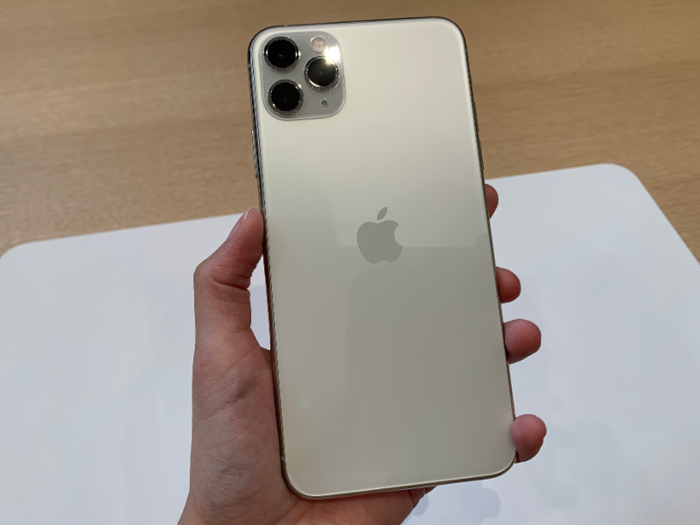
People who love big screens are passionate about the topic — every tenth of an inch matters. Although the difference between the 6.1-inch iPhone 11 and the 6.8-inch iPhone 11 Pro Max is arguably small, it makes all the difference in the world to them. If you want the biggest iPhone you can buy, the 11 Pro Max is it.
Its 6.8-inch OLED screen looks absolutely beautiful and it's ideal for watching videos or playing games. The 11 Pro Max also has the longest battery life of any iPhone by far, which is very important if you're watching videos and playing games on it all the time.
Apple also included a fast charger and the lightning-to-USB-C cable for quick charging in the box, so you can recharge your phone much faster. Just like the other recent iPhones, the Max has wireless charging too.
Apple's new A13 Bionic processor is also speedy in this version of the phone. It doesn't stutter no matter what you ask it to do. It's the same processor that's in the smaller iPhone 11 and iPhone 11 Pro models.
The entry-level 64GB of storage should be more than enough for most people, but if you want more, you can get 256 or 512 GB of storage instead — for a few hundred dollars more.
The Max has the same 12-megapixel cameras as the regular iPhone 11 Pro: a wide-angle, an ultra-wide-angle, and a telephoto-lens. The phone takes excellent photos in any light, thanks to the new Night Mode feature. We've been very impressed with it in testing.
The front-facing camera is also 12-megapixels and it can create the blurred background effect on your selfies so you're the focus — not the background. You can also use the front camera to securely unlock your phone with Face ID.
The iPhone 11 Pro Max comes in Midnight Green, Space Gray, Silver, and Gold. It's also water resistant for 30 minutes in depths of up to 4 meters.
Pros: Biggest screen of any iPhone, OLED looks crisp, fast A13 Bionic processor, three-camera setup, best battery life of any iPhone
Cons: Expensive
The best budget iPhone
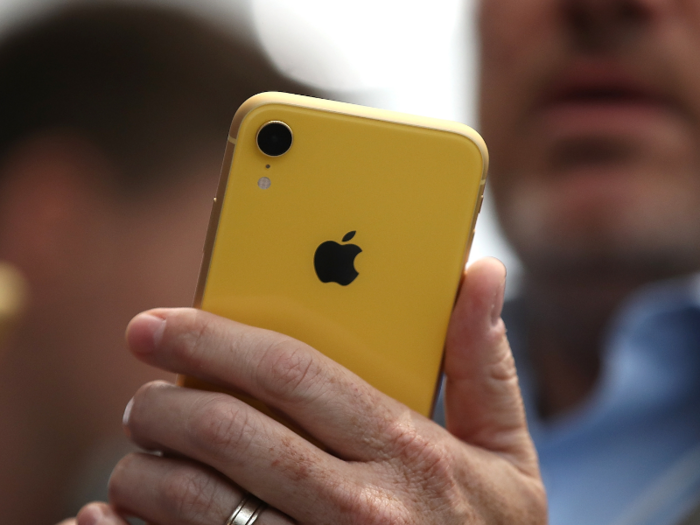
Although it's a year old now, the iPhone XR remains a fantastic buy, thanks to its price cut — you can get it for $599 now. The phone costs $100 less than the new iPhone 11, so if you really can't pay $699 for the iPhone 11, the XR is your best option.
Its A12 Bionic processor is only a year old, and the XR has the same modern design as the iPhone 11. It's just missing the second ultra-wide-angle camera, the new processor, and the improved battery life.
The 6.1-inch screen is LCD instead of OLED, but the resolution is so sharp and the quality of Apple's LCD screens has always been so high it's unlikely to be noticeable. The back of the phone only has one 12-megapixel camera instead of two, but if you're coming from an iPhone 8, 7, or older that won't matter to you unless you've simply been dying for the blurred bokeh effect of portrait mode or the 2x optical zoom.
And besides, the front 7-megapixel camera does have the blurred bokeh portrait effect, so your selfies will get the high-end treatment. Plus, the XR has Face ID, so you're not even missing out on that.
It also comes in fun color options like red, yellow, coral, blue, black, and white.
Pros: Big screen, great processor, gorgeous design, fun colors, good cameras, FaceID, wireless charging
Cons: Expensive, hard to use one-handed, glass is fragile, no headphone jack or adapter in box
The best small iPhone for less
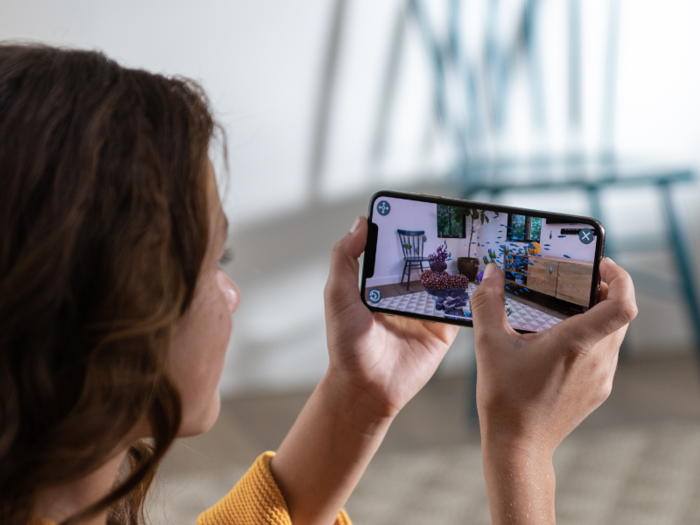
The iPhone XS is no longer sold by Apple, but you can get it from Best Buy and most carriers. If you can get a deal, it's worth buying for people who are upgrading and trying to save money. However, the iPhone 11 costs just $699, and with its brand-new processor and two cameras on the back, it is probably the better choice for most people.
That said, the iPhone XS is still a phenomenal phone that's worth buying. Its 5.8-inch OLED True Tone screen is crisp, clear, and accurate in its color reproduction. It's the perfect size for comfortable one-handed use, and the screen is plenty big.
Those of you who are itching for an even bigger screen should just scroll right on ahead to the next slide where we talk about the equally good — though slightly unwieldy — iPhone XS Max. You won't have to stretch your hands to hold the XS, and that's what makes it our top pick above the Max.
Apple's now year-old A12 Bionic chip is still fast and there are no delays, snags, or long load times with the XS. The entry-level 64GB of storage should be more than enough for most people, but if you want more, you can get 256 or 512 GB of storage instead — for a few hundred dollars more.
Apple has also improved the dual 12-megapixel cameras on the back of the iPhone XS to ensure better performance in low light. We love the 2x optical zoom on the iPhone XS and the option to continue zooming in to 10x with software zoom. Zoomed in photos look excellent at 2x and still great at as high as 5x. After that, the picture gets less sharp, but it still works in a pinch.
The bokeh portrait mode works remarkably well with both the back cameras and the 7-megapixel selfie cam on the front. FaceID is seamless and super fast for unlocking the phone, and since I've been using it for about a year now, it's even faster and more reliable. FaceID knows it's me even when I have sunglasses on, it's dark, or my face is partially obscured. It also makes logging into all my accounts dead simple.
Battery life is decent, though not as long as it is on the Max or the new iPhone 11 lineup. Wireless charging continues to be useful and convenient. The phone comes in Silver, Space Gray, and a lovely gold color. The gold is more subtle champagne and rose in tone, and it looks fantastic. Glass is fragile, so go get one of our recommended cases!
Pros: Good size, great processor, gorgeous design, latest and greatest hardware, fantastic cameras, FaceID, wireless charging
Cons: Expensive, glass is fragile, no headphone jack or adapter in box
The best big iPhone for less
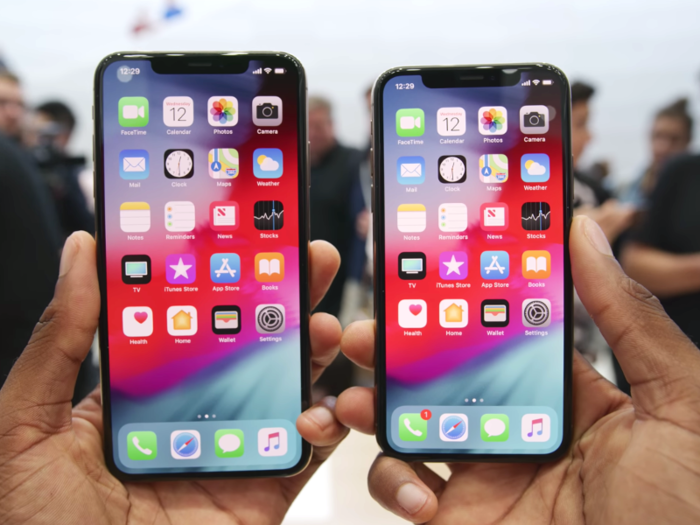
If you've always wanted a massive screen on your phone but you want to save a bit of cash, the iPhone XS Max is a good option if you can get it at a discount. Otherwise, you're better off with the $699 iPhone 11 and its 6.1-inch screen, which is nearly as large as the Max's 6.8-inch screen.
The device is the same physical size as the iPhone 8 Plus, but the bezels are gone. In their place is nothing but a gorgeous, sharp OLED screen. The large screen is perfect for watching video, sharing pictures with friends, and playing mobile games. You simply won't want to look away from it.
The only downside to the large size is that it's hard to operate one-handed unless your hands are large. We recommend a PopSocket grip or a good grippy case to help you handle this phone.
Apple's year-old A12 Bionic chip is still fast and there are no delays, snags, or long load times with the XS Max. The entry-level 64GB of storage should be more than enough for most people, but if you want more, you can get 256 or 512 GB of storage instead — for a few hundred dollars more.
Apple has also improved the dual 12-megapixel cameras on the back of the iPhone XS Max to ensure better performance in low light. We love the 2x optical zoom on the Max and the option to continue zooming in to 10x with software zoom. Zoomed in photos look excellent at 2x and still great at as high as 5x. After that, the picture gets less sharp, but it still works in a pinch.
The bokeh portrait mode works remarkably well with both the back cameras and the 7-megapixel selfie cam on the front. Battery life is quite a bit longer on the Max than it is on the XS, given its larger size. Wireless charging continues to be useful and convenient.
The phone comes in Silver, Space Gray, and a lovely gold color. The gold is more subtle champagne and rose in tone, and it looks fantastic. Glass is fragile, so go get one of our recommended cases!
Pros: Huge screen, great processor, gorgeous design, latest and greatest hardware, fantastic cameras, FaceID, wireless charging
Cons: Expensive, hard to use one-handed, glass is fragile, no headphone jack or adapter in box
The best big iPhone for less than $500
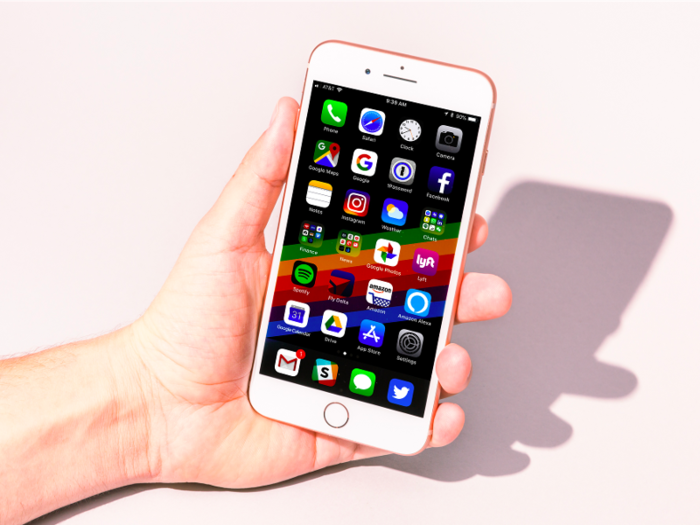
If you want to save cash, you aren't willing to spend $699 on the iPhone 11, and you still want the dual cameras, and a big screen, the iPhone 8 Plus is a good choice.
It may not have facial recognition or the fancy portrait mode camera on the front, but it is still an excellent device. It's a year old now, but it's a good buy because it's on sale at many carriers.
It looks pretty much like the iPhone 7 Plus, so it's a large phone with a big 5.5-inch screen. The only real design change is that the iPhone 8 Plus has a glass back to allow for wireless charging. You'll want to put a case on it to prevent damage and add extra grip — especially since it's a large phone physically. The Touch ID fingerprint sensor is still on the front of the phone and continues to act as a home button.
The dual cameras on the back offer zoom, wide angle, and Portrait mode, so it will take excellent photos that are slightly better than the ones you'd get from the iPhone 7 Plus.
The two-year-old A11 Bionic processor is still decent, though it may not work as well for as long given its age. Apple also started storage off at 64GB, which is excellent. Tech geeks will want to go up to 128GB or 256GB, but most of us will be happy with 64GB. It's also got wireless charging and water resistance.
The iPhone 8 Plus is a great phone that will make most people happy. It's a good way to save a few hundred dollars.
Pros: Fast processor, wireless charging, dual cameras, big screen, fingerprint sensor
Cons: Large size is hard to hold, glass is fragile, not as high-tech as the 11
The best small iPhone for less than $400
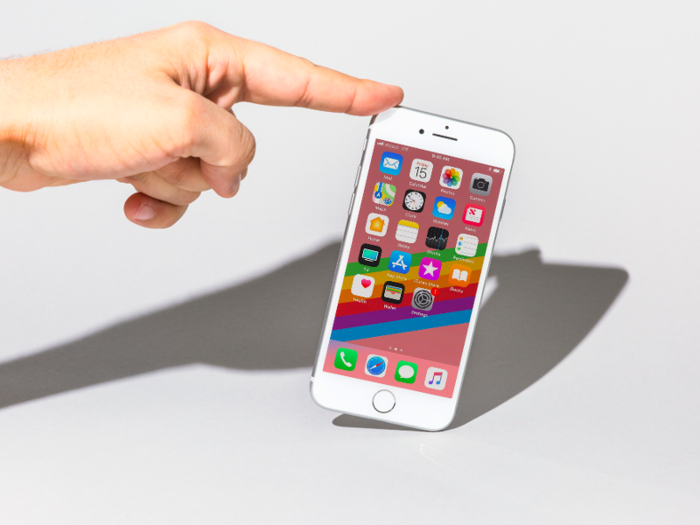
The iPhone 8 is the best phone for people who want to save a lot of money on a smaller phone that's easy to hold. If you aren't ready to buy the 5.8-inch iPhone 11 Pro or you think the iPhone 11's 6.1-inch screen is too much for you, the iPhone 8 is a good option that will save you a lot of money.
It lacks the dual cameras of the iPhone 8 Plus, iPhone X, XS, 11, and other Plus models, but it has all the other features that the iPhone 8 Plus has, including wireless charging and a good processor.
From the front, it's the spitting image of the iPhone 7, so it's a smaller phone with a 4.7-inch screen. The Touch ID fingerprint sensor is still on the front of the phone and continues to act as a home button. The only real design change is that the iPhone 8 has a glass back for wireless charging. You'll want to put a case on it to add grip and protect it from breaking.
Since it's the smaller model, it doesn't have the dual cameras or Portrait mode, which is a shame. Still, the single rear camera is very good and takes lovely photos. The selfie camera is also quite good.
The A11 Bionic processor is still decent. Apple also started storage off at 64GB, which is excellent. Tech geeks will want to go up to 128GB or 256GB, but most of us will be happy with 64GB. It's also got wireless charging and water resistance.
The iPhone 8 is a decent smaller phone with most of the key features you want in an iPhone. It's $100 cheaper than the iPhone 8 Plus, so it's a decent deal for those of you who prefer small phones. you can also get deals on it now at many carriers since it's a year old.
However, the iPhone 11 Pro is about the same size with a screen that's nearly an inch bigger, dual cameras, and other great features. So if money isn't a problem, you'll get a compact phone with better tech and a bigger screen.
Pros: Easy to hold, wireless charging, new processor, more affordable than the XS and the 8 Plus, fingerprint sensor
Cons: Glass is fragile, no dual cameras
Don't buy an iPhone 7 or older no matter what
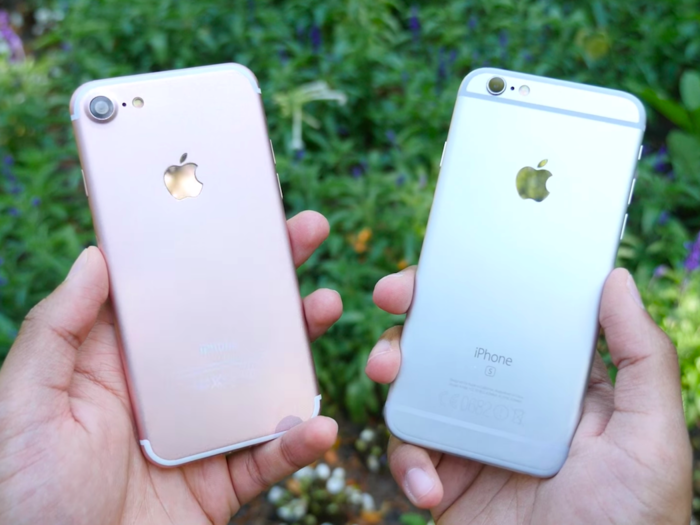
Apple doesn't sell the iPhone 7, iPhone 7 Plus, iPhone 6S, iPhone 6S Plus, iPhone 6, iPhone 6 Plus, or iPhone 5S anymore for a reason — These are three-to-six-year-old phones with old tech inside. These phones can still get the latest software update of iOS 12, but it is likely to be the last software update they will ever get. That means you'll have an old version of iOS and any security problems that come with it.
Your device will also slow down and crash occasionally because the processor and RAM are from three-to-four years ago, and therefore unequipped to handle new software and apps. Your battery life is also likely to take a hit because the phone will be working harder to accomplish even simple tasks like connecting to your cell network.
I know from experience. I had an iPhone 6 Plus that I had been using for about six months two years ago just to see how it runs. It stutters often. The battery doesn't last as long as it used to, either, and it doesn't always find my cell network right away. It works decently on iOS 11, but it is slower than it was on iOS 10. And now we're on iOS 13.
You'll be spending hundreds of dollars on a phone that won't last more than a year or two. It's a bad investment. You are much better off getting a newer iPhone model or buying a brand-new, but cheaper, Android phone.
As a tech geek, the iPhone 8 and 8 Plus are the oldest iPhones I'd consider buying, because, at two years old, they're a good deal. They will last you three years at least.
Check out your Android alternatives in the next slideThe best Android alternatives
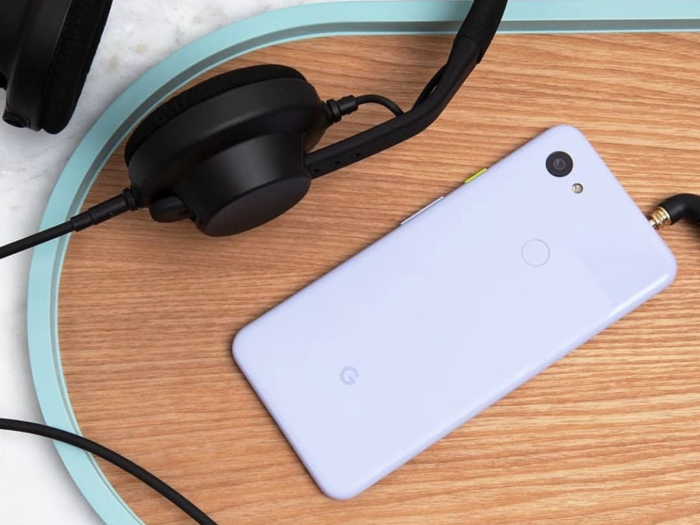
Android phones are also great, so if you're not totally committed to the iPhone, take a gander at these comparably priced options.
Instead of getting an older iPhone, get the Google Pixel 3a or 3a XL.The Google Pixel 3a and 3a XL are excellent phones that are very affordable. They have excellent cameras that are capable of capturing impressive images that rival those of the new iPhone 11 lineup — especially in low-light conditions. They run clean Android and get regular software updates. The 3a is only $299.99 and the 3a XL is $379.99. If you want a top-of-the-line Android phone, we suggest waiting for the Pixel 4, which is likely to launch on October 15.
We also like these cheap phones:- Best cheap phone for $300: Moto G7
- Best cheap phone with stock Android: Nokia 7.1
- Best cheap phone for less than $250 or less: LG Stylo 4
- Best cheap phone for $550: OnePlus 6T
Popular Right Now
Advertisement